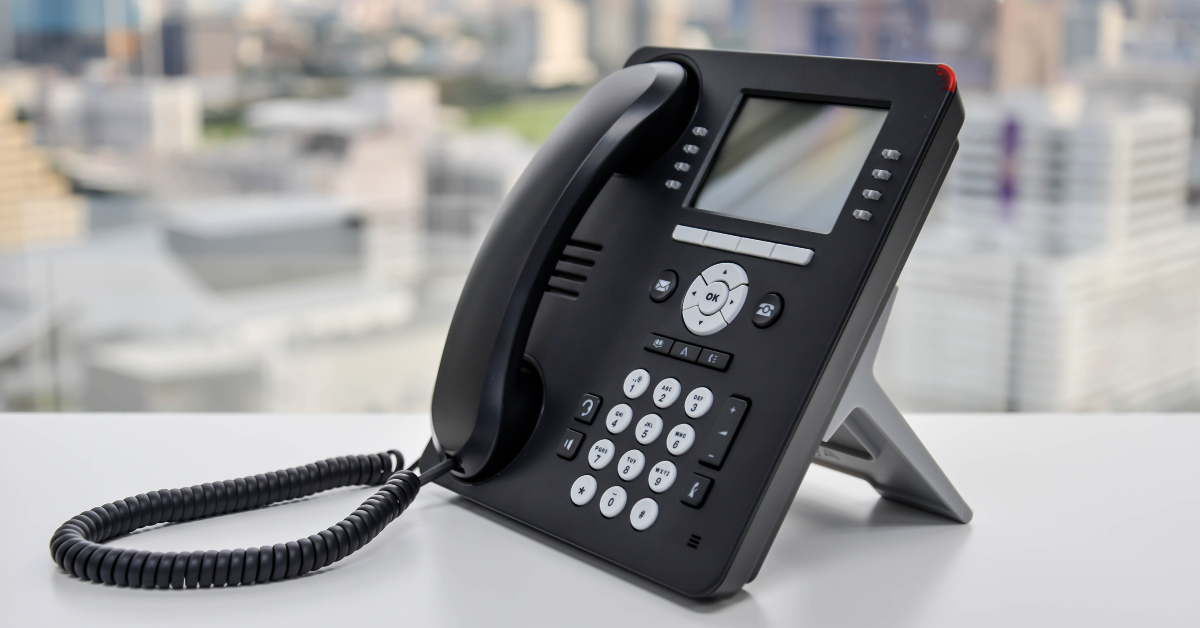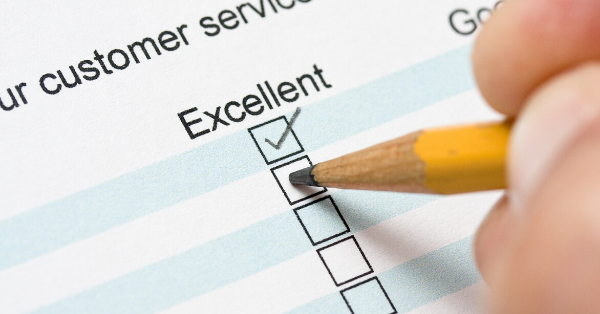
Good customer service training is vital for any key position that has contact with your patients, clients, and customers. The same applies to the person handling your business's phone calls.
A call operator, in-house receptionist, or answering service is often the first impression that a customer or caller will have of your company. How they treat your callers will set a precedent for the rest of your business relationship with them. For the success of your business, make sure that it's a good one.
Take a minute to review this simple guide for call operators with your staff. Use it to coach them on customer service telephone techniques that will improve your office communication, lead to better messaging and improved customer experiences.
We have also included expanded training tips for 5 common situations that call operators will find themselves handling.
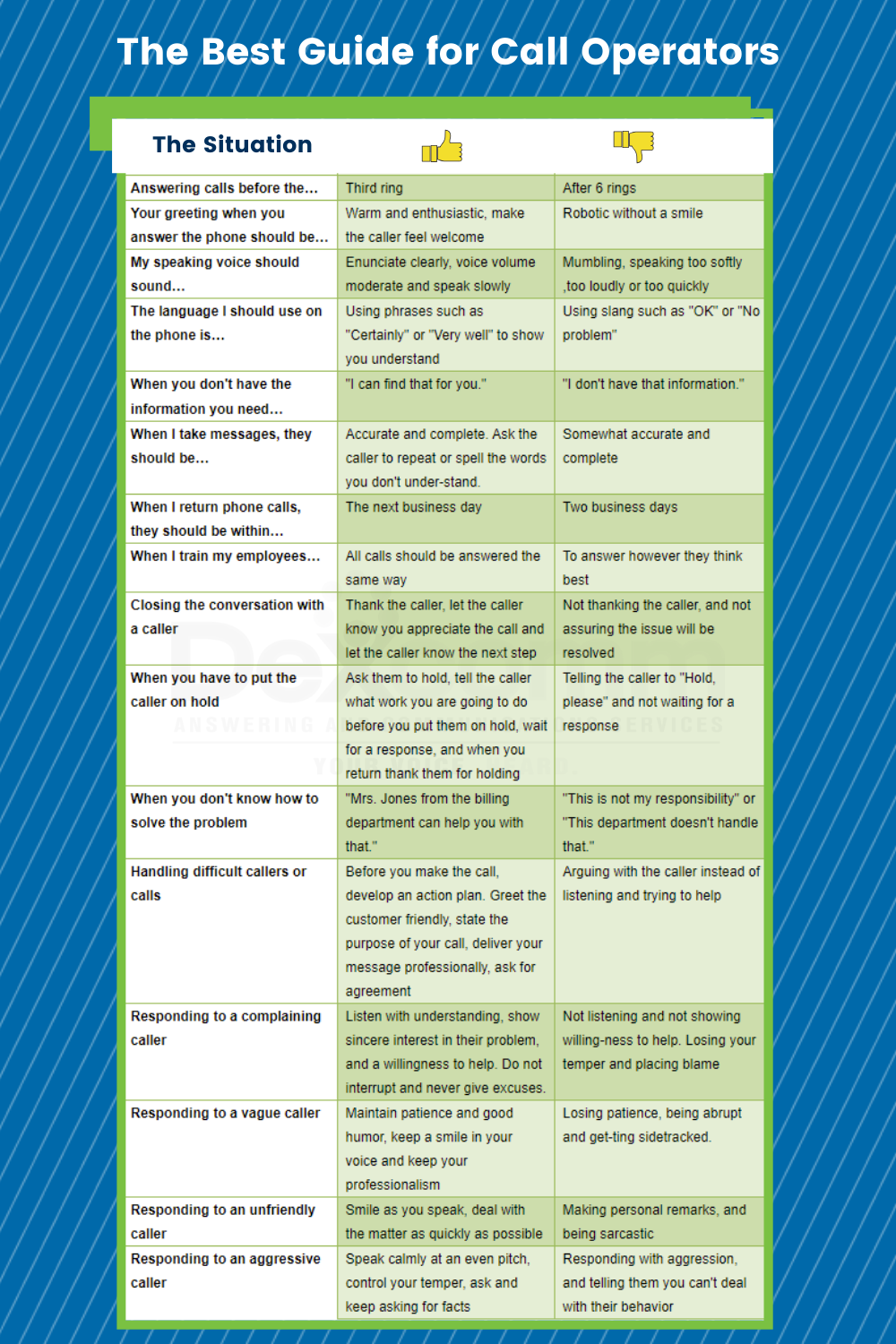
Training Tips
Message Taking
The most important job for any call operator is to provide accurate message taking. When speaking to the caller, a call agent should always ask the caller to repeat information and verify spelling. Never assume that a name is spelled a certain way, as many common names have multiple spellings.
Verify phone numbers as well. Caller ID can assist you with the caller's number, but it may not be the number that they would like to be contacted by.
By providing an accurate message, your business will be able to easily contact your caller and continue business, whether that be scheduling an appointment or making a sale.
Handling Upset Callers
No matter the industry, all call operators or receptionists will eventually have to handle an upset caller. How they choose to handle the caller will have the most impact on your business.
A good call operator will treat an upset and/or complaining caller with the same level of professionalism that they would a cheerful caller. A complaining caller only requires more focus in order to successfully solve their issue.
This focus can be shown by fully engaging with the caller. Your operator should strive to listen, help and thank the caller in order to handle their complaint, and prove the customer service of your company.
Number of Rings
A good call operator or answering service should answer company calls within three rings. This is considered the standard in the telephone answering service industry.
Three rings equates to about ten seconds of wait time for callers. Each additional ring adds about three more seconds of wait time. So, for a caller who has to wait six rings for an operator, that would equate to about 36 seconds of hold time.
Thirty six seconds doesn't seem like a long time to wait for an operator to pick up, but for a caller it could be the difference between giving their business to your company or hanging up and calling your competition.
Speaking Voice
Tone of voice has a major impact on the conversation between operator and caller. Because their interaction is limited to the telephone, they are unable to communicate through body language and facial cues.
With only voice to communicate, customers base the basis of their interaction on your operator's tone of voice. If your operator isn't using a defined, confident tone of voice, comunications will lack clarity.
While visually undetectable by the caller, an operator's body language can still impact their tone of voice. In fact, a smile can be heard through the phone! A smile affects how we speak, and when a caller hears a smile over the phone, they are likely to smile back. All of these smiles should guarantee that your caller is feeling heard and will have a positive interaction with the operator representing your company.
Placing A Caller on Hold
When handling a customer's concern, there are times when placing them on hold is necessary. An operator putting a caller on hold is not an issue, if carried out in the appropriate manner.
When placing your caller on hold, always ask permission first. Explain to the customer what work you will be doing while you place them on that hold, and wait for the customer to acknowledge your reason. Once you take the caller off of hold, always thank them for holding and continue your conversation.
Never interrupt the caller and say that you will place them on a hold and then do so without waiting for a response from the customer. This will come off as rude, and make the caller upset. When you do return from that hold you will be dealing with an upset caller and the remainder of your discussion will have difficulties.
Note: Looking for more telephone techniques? Click here to read our top article, "Effective Telephone Communication Skills".
Key Points
Here at Dexcomm, we understand the importance of great customer service skills. Customer service drives your business by creating relationships with your prospects and customers.
Many of these relationships with customers are started on the telephone and begin with your call operators. How your operators handle your business calls in certain situations will have either a positive or negative impact on your business.
Use this guide and the above training tips to ensure that your call operators, answering service, or in-house receptionist understand the proper methods of communicating with your callers.
It also is important to have great customer service after hours as well. If you'd like to learn more about the importance of after-hours customer service, and how to provide it to customers of your company, read our article "After-Hours Customer Service-5 Tips For Excellent Customer Satisfaction."


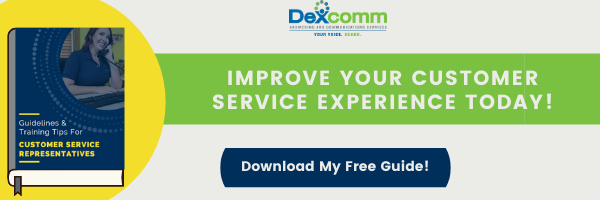
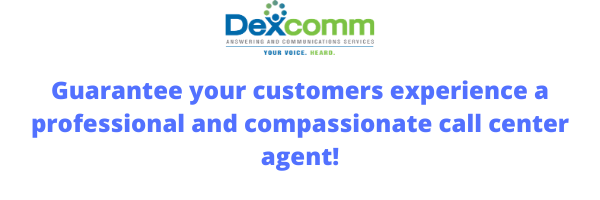
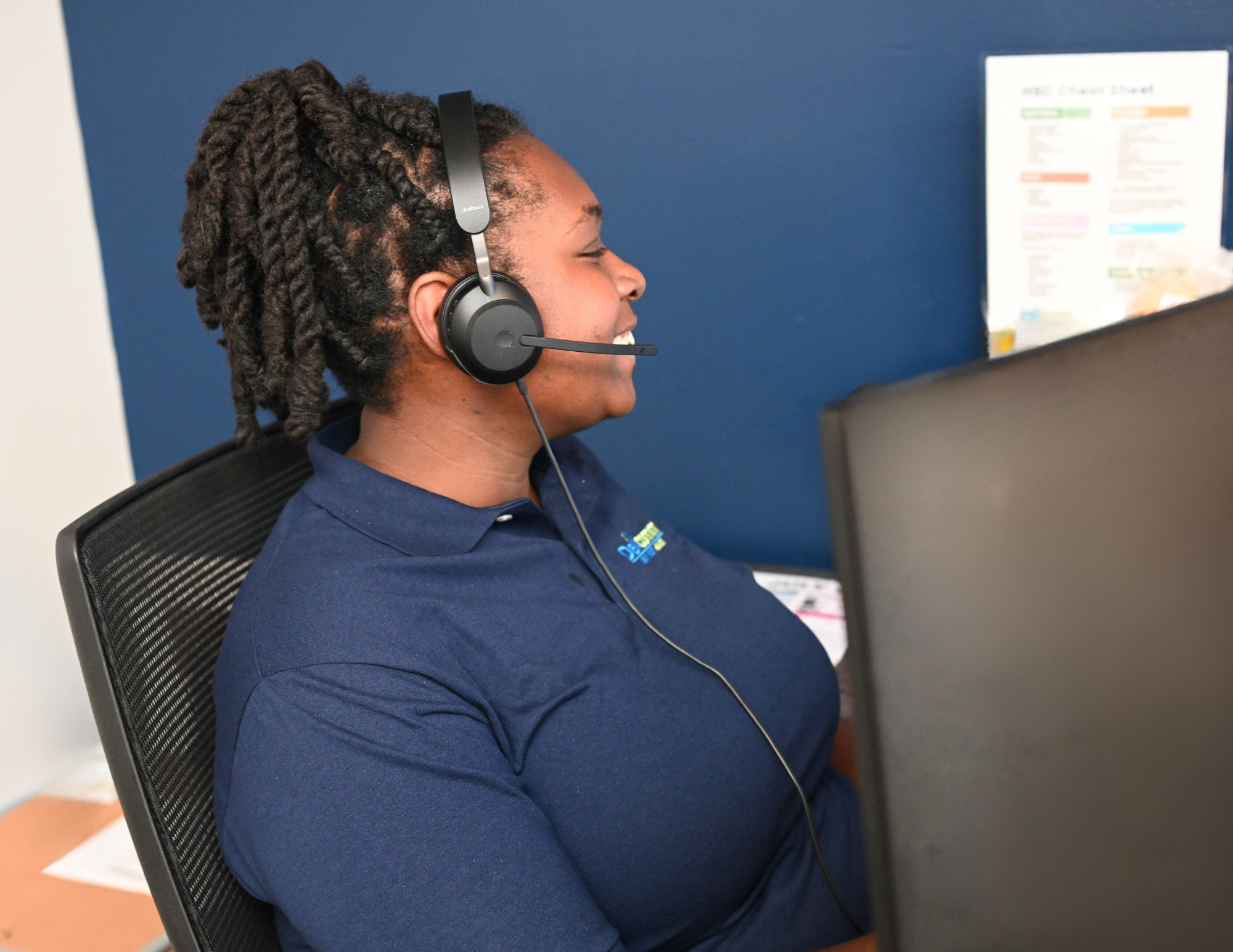
.png)
